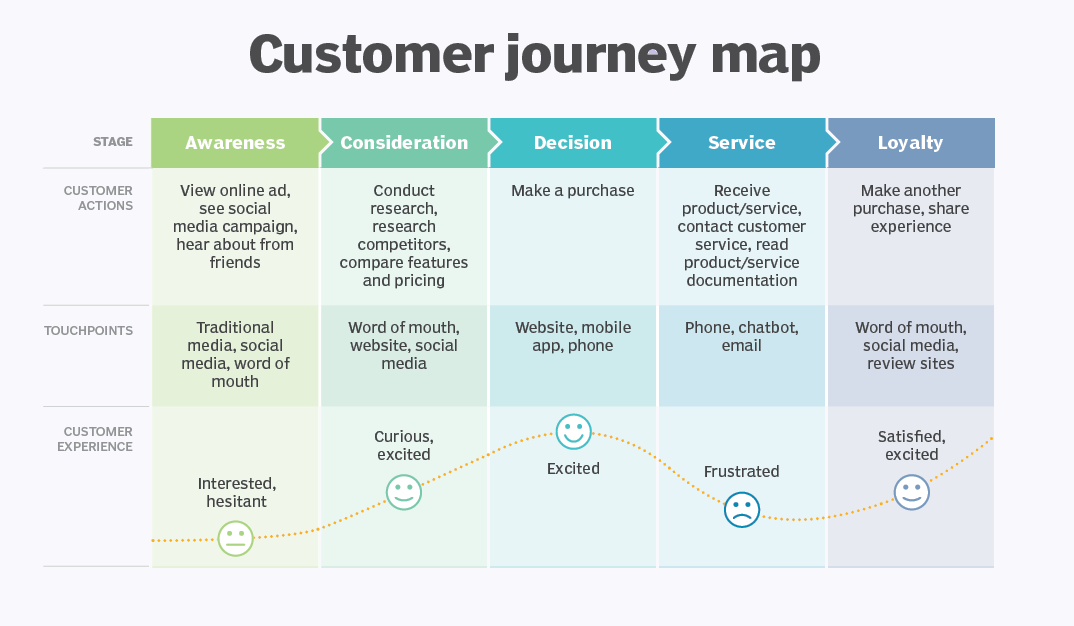Boosting Customer Loyalty Through Personalized Customer Journey Mapping

PersonalizationIn today's competitive market, customer loyalty is paramount to sustainable business growth. Businesses are constantly seeking innovative strategies to attract and retain customers, and personalized customer journey mapping has emerged as a powerful tool in achieving this goal. This article delves into the significance of personalized customer journey mapping and how it can be leveraged to enhance customer loyalty and drive business success.
Understanding Customer Journey Mapping
Customer journey mapping is the process of visually representing the steps a customer takes when interacting with a brand, product, or service. It provides a holistic view of the customer experience, from the initial point of contact to post-purchase interactions. By understanding each touchpoint and interaction, businesses can identify potential pain points, areas for improvement, and opportunities to exceed customer expectations.
The Power of Personalization
Personalization takes customer journey mapping a step further by tailoring the customer experience to individual preferences and needs. By leveraging data analytics and customer insights, businesses can create personalized journeys that resonate with customers on a deeper level. This can involve personalized recommendations, targeted messaging, and customized offers, all designed to enhance the customer experience and foster loyalty.
Benefits of Personalized Customer Journey Mapping
The benefits of implementing personalized customer journey mapping are multifaceted and can significantly impact a business's bottom line:
Increased Customer Loyalty:
Personalized experiences make customers feel valued and understood, leading to increased satisfaction and loyalty. A study by Accenture found that 91% of consumers are more likely to shop with brands that provide personalized offers and recommendations.
Improved Customer Retention:
By addressing pain points and exceeding expectations, businesses can reduce customer churn and improve retention rates. Research by Invespcro shows that businesses can experience a 6-10% increase in revenue by focusing on customer retention.
Enhanced Customer Lifetime Value:
Loyal customers tend to spend more over time, increasing their lifetime value. A study by Bain & Company found that a 5% increase in customer retention can lead to a 25-95% increase in profits.
Positive Word-of-Mouth Marketing:
Satisfied customers are more likely to recommend a brand to others, leading to organic growth and increased brand awareness. Nielsen reports that 92% of consumers trust recommendations from people they know.
Real-World Examples of Personalized Customer Journey Mapping
Several companies have successfully implemented personalized customer journey mapping to enhance customer loyalty. Here are a few notable examples: * **Amazon:** Known for its personalized product recommendations based on browsing history and purchase behavior. * **Netflix:** Provides personalized content suggestions based on viewing preferences. * **Spotify:** Offers customized playlists and music recommendations based on listening history.
Implementing Personalized Customer Journey Mapping
Implementing personalized customer journey mapping requires a strategic approach: 1. **Define Your Target Audience:** Understand your customer segments and their unique needs and preferences. 2. **Map the Customer Journey:** Identify all touchpoints and interactions throughout the customer lifecycle. 3. **Collect and Analyze Data:** Gather data on customer behavior, preferences, and pain points. 4. **Personalize the Experience:** Tailor touchpoints, messaging, and offers based on individual customer insights. 5. **Monitor and Optimize:** Continuously track results, gather feedback, and make adjustments to optimize the personalized journey.
Conclusion: Embracing the Future of Customer Experience
In conclusion, personalized customer journey mapping is not just a trend but a fundamental shift in how businesses interact with customers. By understanding individual needs and tailoring experiences accordingly, businesses can cultivate strong customer relationships built on loyalty and trust. Embracing this customer-centric approach is essential for thriving in today's competitive landscape and driving sustainable business growth.










Comments ()